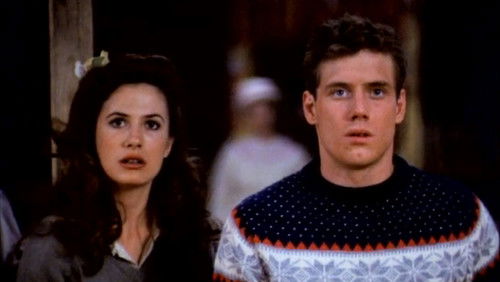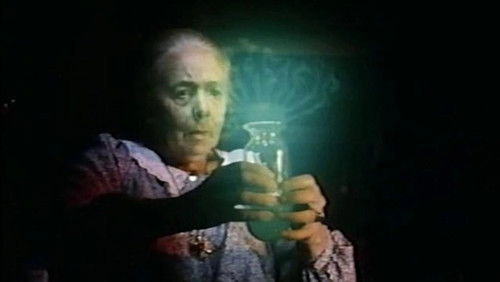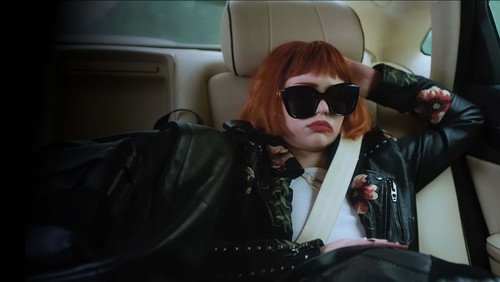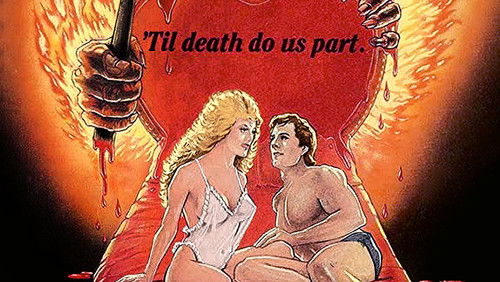Kädetön Alfonso (1927)
52KKädetön Alfonso (1927). 1h 3m | Unrated
“The Unknown is one of the more interesting Lon Chaney collaborations with director/writer Tod Browning, as Chaneyu0026#39;s typically physically malleable performance is often executed here in conjunction with u0026quot;stunt doubleu0026quot; Peter Dismuki. It also features a great, early appearance by Joan Crawford, a complex, gripping, allegorically deep but economically told story by Browning, and it is an excellent instantiation of themes found throughout Chaney and Browningu0026#39;s other work. It even strongly presages Browningu0026#39;s 1932 film, Freaks.u003cbr/u003eu003cbr/u003eChaney is Alonzo the Armless, a performer in Antonio Zanziu0026#39;s circus. Alonzo is in love with Nanon (Crawford), Antoniou0026#39;s daughter and Alonzou0026#39;s assistant in his act, which consists of him using his feet to shoot guns and throw knives around Nanon with precision aim. In a typical Chaney film complicated love triangle, Nanon and Zanzi Circus strongman Malabar are also attracted to each other, but Nanon has an aversion to being touched and keeps distancing Malabar and any other man who wants to be intimate.u003cbr/u003eu003cbr/u003eAlonzo is the perfect complement for Nanon then, since he cannot manhandle her. She feels safe with him. But Antonio objects to Alonzou0026#39;s approaches towards Nanon. Complex confrontations and a number of fabulous twists ensue, and Chaney fans will likely expect the resultant profound tragedy with the reciprocally bittersweet u0026quot;happy endingu0026quot; consequences.u003cbr/u003eu003cbr/u003eI probably made that synopsis sound more soap-operatic than it should, since it doesnu0026#39;t very well convey the overall twisted, creepy atmosphere that Browning achieves in The Unknown. Like Freaks, this isnu0026#39;t exactly a horror film, but it has all the unsettling, macabre attitude of one. Alonzo is one of Chaneyu0026#39;s more demented, sinister characters, as almost every move he makes has a nefarious, ulterior motive. This even includes the reason that he joined the Zanzi Circus in the first place. It becomes quickly clear that Alonzo will stop at nothing to have Nanon all to himself. But because the character has no arms, he canu0026#39;t very well resort to physical bullying. Instead, Chaney paints a subversive and deviously manipulative character. Even the characteru0026#39;s love for Nanon feels wicked–itu0026#39;s more of an unhealthy obsession than love.u003cbr/u003eu003cbr/u003eBrowning makes good use of his largely pared down sets and cast. Except for the opening circus scene, most of the film takes place among only four characters, in only a handful of circus wagon (used later for both Freaks and Chaneyu0026#39;s 1928 film Laugh, Clown, Laugh) and apartment locations, with the ending, set in a theater, symmetrically reflecting the opening of the film. A single scene in a formal courtyard provides a nice, symbolic contrast, as does the use of the u0026quot;extended techniqueu0026quot; of a thin piece of gauze placed over the camera lens for some of Nanonu0026#39;s scenes.u003cbr/u003eu003cbr/u003eEqually economical is Browningu0026#39;s complex story, which tells as much–with the aid of the performances–through implication of various backstories as it does through direct action. The (heavily allegorical) subtexts are fascinating. Nanon is frigid, so her most intimate relationship is with a man who has been effectively castrated. He is so obsessed with her that heu0026#39;ll physically sacrifice himself to enable a relationship. She secretly desires a normal love, but canu0026#39;t have one until she falls into it, or is tricked into it in a way. No one is quite honest with anyone else except for a man who is a relative simpleton, there to be manipulated. But heu0026#39;s the one who ends up coming out ahead, even though he never quite knows what is going on.u003cbr/u003eu003cbr/u003eBrowning had to construct a number of elaborate set-ups to produce the illusion that Chaney had been using his feet to do everyday activities for a long time. We often see Chaneyu0026#39;s body but Peter Dismukiu0026#39;s feet, such as when Alonzo is playing guitar, smoking, drinking, and so on. Occasionally, Dismuki just stood in for Chaney, usually when Alonzo has his back to the camera, but at least in one wider shot, we can see Dismukiu0026#39;s face.u003cbr/u003eu003cbr/u003eThe 1997 score on the Turner Classic Movies version of the film by the Alloy Orchestra is occasionally excellent–especially during the climax of the film, and occasionally a bit pedestrian. When itu0026#39;s only pedestrian itu0026#39;s at least unobtrusive. The score has a modern, occasionally u0026quot;rockyu0026quot; feel that meshes surprisingly well.u003cbr/u003eu003cbr/u003eThere are a few scenes missing from the print transferred to the TCM DVD, but for many years, The Unknown was thought to have been lost, similar to Browning and Chaneyu0026#39;s 1927 film London After Midnight. A print was found at the Cinémathèque Française, mixed in with a lot of other films marked u0026quot;unknownu0026quot; because the contents were (at least temporally) unidentifiable. The missing scenes do not hurt the coherency of the film, which is a must-see at least for any Chaney or Browning fans.”









